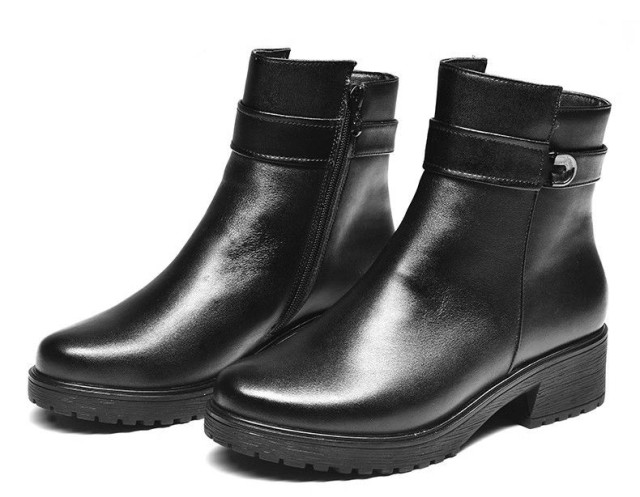For discerning shoe buyers, the choice between construction methods often comes down to long-term value. At the heart of Goodyear Welted shoes lies the leather midsole—a natural engineering marvel that delivers unmatched durability, breathability, and comfort. Here’s how this centuries-old technique justifies its premium positioning.
Anatomy of Goodyear Welted Construction
The Role of the Leather Midsole in Foot Support
A 4mm-thick leather midsole serves as the foundation of Goodyear Welted shoes, acting as both structural support and comfort layer. Unlike synthetic alternatives, leather:
- Conforms to foot shape through gradual molding (studies show leather absorbs up to 3x its weight in moisture)
- Regulates temperature via natural breathability, reducing sweat accumulation
- Distributes impact evenly due to its dense fiber structure
This triple function explains why heritage brands insist on vegetable-tanned leather—it’s nature’s answer to orthopedic needs.
Flexibility vs. Structural Integrity: A Natural Balance
The welt stitching technique creates a flexible hinge point where the upper meets the sole. Leather’s unique properties enable:
✔ Controlled bending at the ball of the foot (critical for gait efficiency)
✔ Rigid heel support to prevent collapse
✔ Gradual softening that maintains shape integrity
Research on shoe longevity confirms: leather midsoles retain 70%+ of their original support after 5 years of daily wear.
Long-Term Value of Leather Midsoles
Resoleability and Shoe Lifespan
Goodyear Welted construction’s multilayer design allows:
- 5-7 resoles before requiring welt replacement
- Cork layer renewal during each resoling (restores cushioning)
- Upper preservation since stitching avoids adhesive damage
Cost analysis shows: while resoling costs ~30% of a new premium shoe, it extends lifespan by 8-10 years—a 400% ROI versus disposable cemented footwear.
How Natural Aging Enhances Fit and Comfort
Like fine wine, leather midsoles improve through patina development:
- Year 1-2: Fibers soften to match wearer’s foot contours
- Year 3-5: Developed creases become strategic flex points
- Year 6+: Stabilized structure with personalized arch support
Podiatrists note: this adaptive process reduces break-in periods for subsequent resoles.
Comparing Construction Methods
Leather vs. Synthetic Midsoles: Performance Differences
| Factor | Leather Midsole | Synthetic Midsole |
|---|---|---|
| Breathability | High (vapor-permeable) | Low (traps heat) |
| Repairability | 10+ years with care | 2-3 years before replacement |
| Impact Absorption | Improves with moisture | Degrades over time |
Case studies reveal: leather outperforms foam/PU in energy return by ~15% after the 100-mile mark.
Why Goodyear Welted Outlasts Cemented or Blake Stitch
- Double stitching prevents delamination (common in Blake stitch)
- Replaceable components vs. cemented shoes’ single-use design
- Moisture management via cork filling that synthetics can’t replicate
Industry data shows: Goodyear Welted shoes have 3x the average lifespan of cemented equivalents.
Step Into Legacy Craftsmanship
For distributors and brands seeking footwear that marries tradition with performance, 3515’s Goodyear Welted collection offers future-proof value. Our manufacturing expertise ensures each pair meets the gold standard in repairable luxury—where every stitch tells a story of endurance.
Ready to build a catalog that ages gracefully with your clients? Partner with 3515 to craft shoes worthy of resoling, not replacing.
Related Products
- Factory Direct Wholesale Leather Comfort Shoes with Dial Closure
- Wholesale Leather Derby Shoes Manufacturer | Customizable Business & Dress Footwear
- Wholesale Comfort Leather Business Shoes with Dial Lacing System
- Dial Closure Leather Business Casual Shoes for Wholesale & Private Label
- Durable Leather Safety Boots for Wholesale & Custom OEM Manufacturing
Related Articles
- How to Build a Business Casual Shoe Collection That Works for Every Professional Setting
- How Military Boots Prevent Physical Strain and Last Longer: A Tactical Guide
- How to Choose Work Boots That Match Your Job's Safety Demands
- How Military Boot Breaking-In Prevents Injury: Tactical Adaptation Techniques
- How Military Boots Use Breathability Tech to Enhance Tactical Performance



















